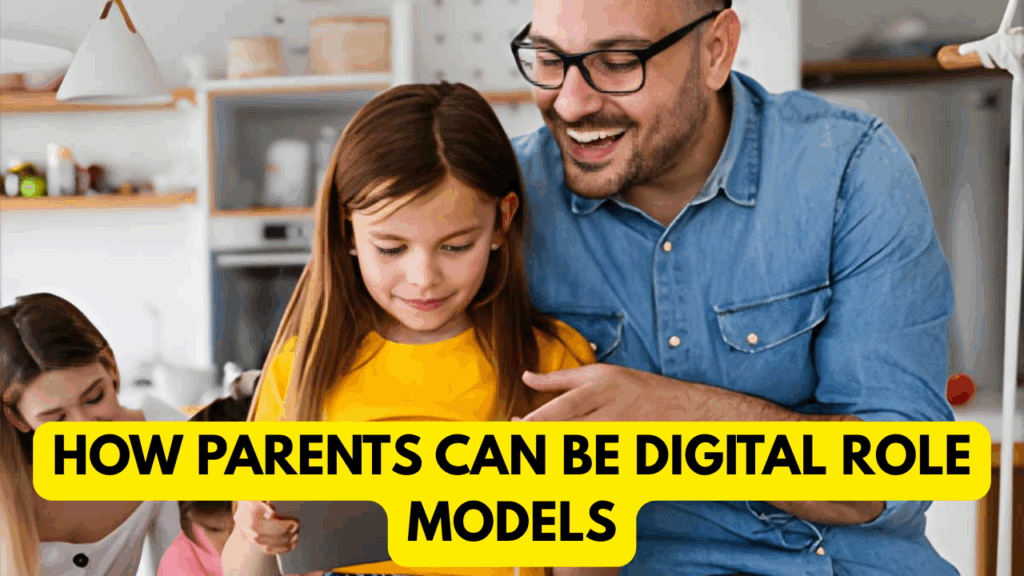
Children today are growing up surrounded by screens—smartphones, tablets, laptops, and smart TVs. While technology offers incredible opportunities for learning and entertainment, it also comes with challenges such as overuse, distraction, and exposure to harmful content. One of the most effective ways to guide children through this digital landscape is for parents to become digital role models themselves.
When parents demonstrate balanced, mindful, and responsible digital habits, children are far more likely to adopt those behaviors. Let’s explore how parents can step into this role and foster a healthy digital culture at home.
Why Parents as Digital Role Models Matter
Children often imitate what they see more than what they are told. If parents spend hours scrolling social media during dinner, children will likely think it’s acceptable. On the other hand, if parents use technology with intention, balance, and respect, it sets a powerful example.
Good role modeling:
- Teaches healthy screen habits
- Builds digital literacy
- Encourages respectful online behavior
- Creates a balanced lifestyle
Key Ways Parents Can Model Healthy Digital Behavior
1. Practice Screen Moderation
Children notice how much time parents spend on devices. Setting personal limits, like avoiding late-night scrolling, shows kids that balance is possible.
2. Create Tech-Free Times and Spaces
Lead by example by putting phones aside during meals, family outings, or bedtime. This demonstrates the value of face-to-face connection.
3. Be Transparent About Online Choices
Explain your own tech decisions. For example, tell your child why you don’t share personal information online or why you limit time on certain apps.
4. Engage in Positive Online Activities
Show kids that the internet isn’t only for entertainment. Use it to learn a new skill, follow meaningful causes, or connect with family abroad.
5. Model Respectful Digital Communication
Demonstrate kindness in texts, emails, or social media comments. Kids who see respectful online behavior will be more likely to mirror it.
6. Balance Online and Offline Life
When children see parents reading books, exercising, or pursuing offline hobbies, they learn the importance of a well-rounded lifestyle.
7. Admit Mistakes and Learn Together
If you catch yourself overusing a device, admit it and discuss how to do better. This shows kids that managing technology is a lifelong learning process.
Challenges Parents Face in Being Role Models
- Work Demands – Many jobs require parents to be online, making it difficult to separate work from leisure screen use.
- Stress Relief Habits – Parents sometimes default to scrolling as a way to unwind, which can unintentionally set the wrong example.
- Generational Gap – Parents may struggle with apps or digital tools that kids are already fluent in.
- Consistency – It’s challenging to set rules for children if parents don’t follow them themselves.
Practical Tips to Overcome These Challenges
- Set Boundaries: Use separate devices or apps for work and personal time.
- Mindful Use: Instead of mindless scrolling, choose purposeful online activities.
- Family Tech Rules: Apply the same screen-time rules to both kids and parents.
- Collaborative Learning: Explore new apps or games together, showing openness to learning.
Sample Family Digital Role Modeling Guidelines
| Rule/Action | Why It Matters | Parent Example in Practice |
|---|---|---|
| Limit screen time | Kids copy usage habits | No devices during family dinner |
| Show digital kindness | Models respectful communication | Comment positively on social media |
| Use tech for growth | Encourages learning and productivity | Take an online cooking class |
| Protect privacy | Teaches online safety | Avoid oversharing on social platforms |
| Balance offline activities | Promotes well-rounded lifestyle | Read books or go for walks regularly |
| Admit tech mistakes | Normalizes imperfection and learning | Acknowledge late-night scrolling |
Overview Table
| Aspect | Parent Action | Long-Term Impact on Kids |
|---|---|---|
| Screen Moderation | Limit personal use | Builds discipline and balance |
| Tech-Free Family Time | No devices at meals/bedtime | Strengthens family bonding |
| Online Transparency | Explain online choices | Develops critical digital thinking |
| Respectful Communication | Model kindness online | Promotes empathy and digital etiquette |
| Offline Balance | Engage in non-digital hobbies | Encourages creativity and activity |
| Admitting Mistakes | Share struggles openly | Teaches resilience and self-awareness |
Final Thoughts
Parents are the first teachers of digital habits. By practicing balance, kindness, and responsibility online, they can guide their children to use technology in healthy, empowering ways. Being a digital role model isn’t about being perfect—it’s about being intentional and consistent. Small actions, like putting away the phone during family time or showing respect in online conversations, can make a big difference in shaping children’s long-term relationship with technology.
3 Quick FAQs
Q1. Why should parents model digital behavior instead of just setting rules?
Because children often copy actions more than words—your behavior carries more weight than your instructions.
Q2. How can parents balance their own work-related screen use?
Set boundaries between work and leisure use, and explain to children why some screen time is necessary for work.
Q3. What if parents struggle with their own screen habits?
Be honest, admit mistakes, and work on improving together—it teaches kids that self-control is a lifelong skill.

